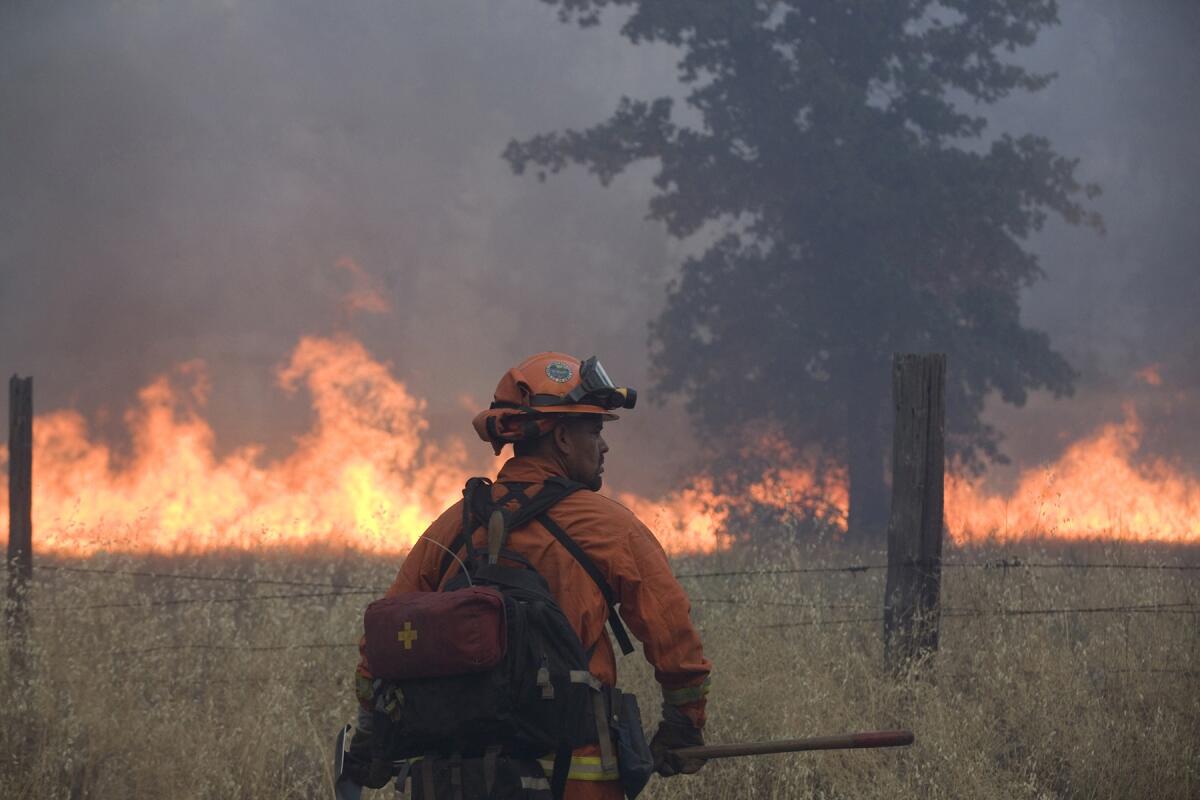Amid extreme drought, California sees big jump in brush fires

- Share via
As California endures record heat and severe drought conditions, the state is also recording more wildfires this year.
Through July 19, the California Department of Forestry and Fire Protection reported more than 3,400 vegetation fires that have burned more than 51,000 acres.
An average year would see about 2,500 fires and 30,000 acres burned, said Cal Fire Capt. Amy Head.
The fires have occurred across the state, including major brush fires in San Diego County and in wine country.
The first six months of the year were the hottest ever in California, the National Weather Service said Monday. It was nearly five degrees warmer than the 20th century average and more than a degree hotter than the previous record set in 1934.
And July isn’t shaping up to be any better, with a heat wave expected to send temperatures above 100 degrees in parts of Los Angeles County, especially on Thursday and Friday and through the weekend.
The difference is particularly obvious in places that normally feature green landscapes, said Head, who lives in Sonoma County.
“In the winter and spring around Sonoma County you’re driving around and there’s nice, green rolling hills everywhere,” she said. “It was odd to drive around and see brown hills everywhere.
“We got a little rain and everything greened up real quick and the grasses grew tall,” Head added. “Then things dried up just as quickly.”
Warren Blier, a meteorologist for the National Weather Service in Monterey, said that although the Bay Area and other parts of Northern California haven’t necessarily seen pervasive hot weather like other parts of the state, it has been warmer than usual and definitely drier. He said one large reservoir in southern Monterey County, Lake San Antonio, is at only about 4% of capacity.
Stuart Seto, a specialist for the National Weather Service in Oxnard, said the last two years have been the driest on record for downtown L.A., with less than 12 inches of rain total. An average year is about 15 inches, he said.
The months of May and June were actually the warmest on record for planet Earth, Seto said.
Until June, every month this year had been significantly hotter than normal in L.A., said Bill Patzert, a climatologist for the Jet Propulsion Laboratory in La Cañada Flintridge.
January was four degrees above normal, February more than two degrees, March about four degrees, April almost two degrees and May almost five degrees hotter than average. June’s temperatures ended up about average for L.A., Patzert said.
It remains to be seen how July will turn out, but August and September are two of Southern California’s hottest months, said Patzert, who calls the latter “the heat wave month.”
The fact that it’s also been dry for at least three years straight in much of the state has worsened an already difficult situation. The agricultural industry is facing $1 billion in lost revenue this year from the state’s worst drought in decades and might have to pay about $500 million for additional groundwater pumping.
Times staff writer Joseph Serna contributed to this report.
Twitter: @hbecerralatimes
More to Read
Sign up for Essential California
The most important California stories and recommendations in your inbox every morning.
You may occasionally receive promotional content from the Los Angeles Times.












